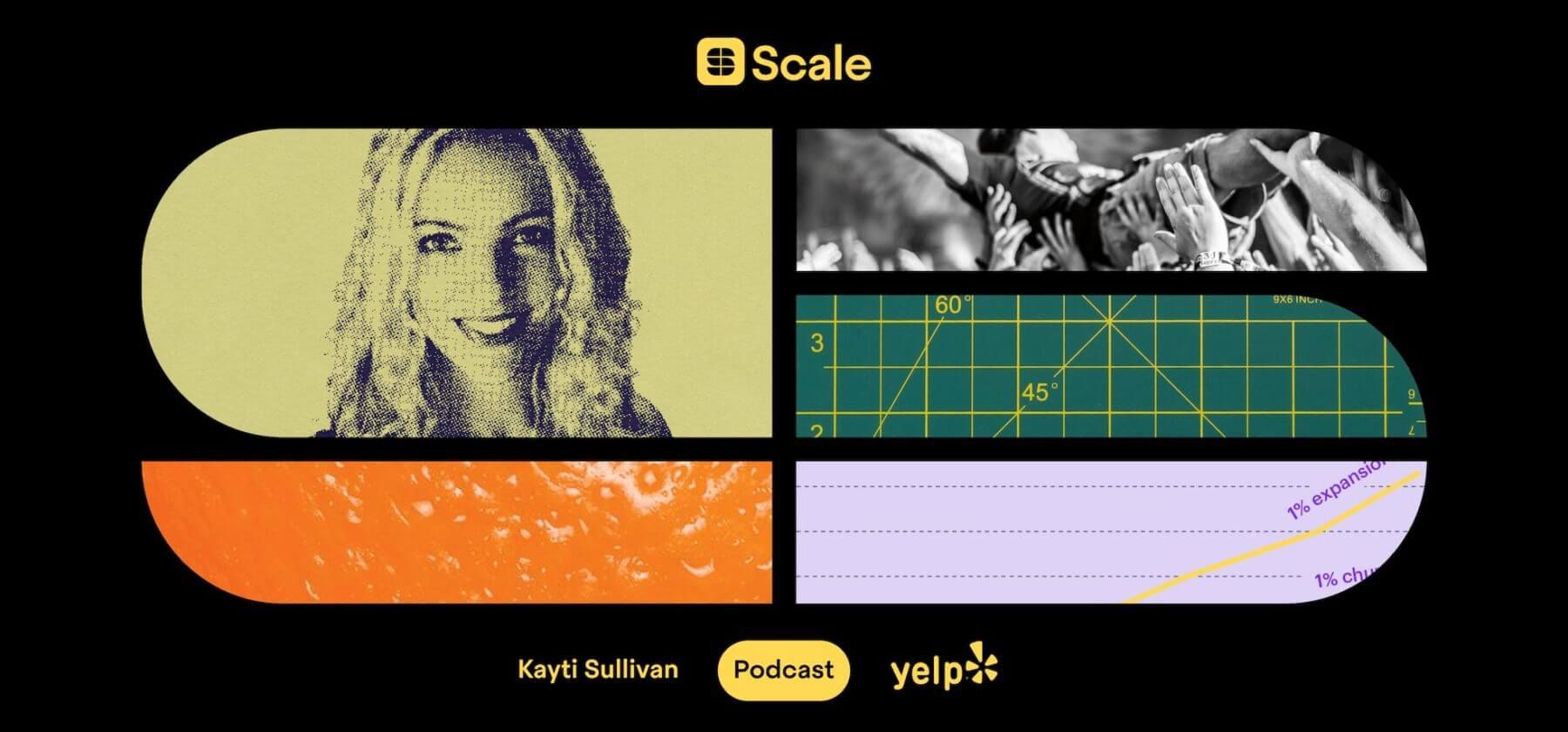
How Yelp drove down churn by building up customer success
When your startup is just getting off the ground, it makes all the sense in the world to go deep: focusing on your users’ unique problems and throwing all your weight behind coming up with a solution.
As a brand new company, you might engage in plenty of initiatives that are inherently un-scalable – because there’s no better way to nurture customer love than through a personal relationship. But what happens when you hit hockey-stick growth, and you’re no longer able to connect with individuals on a one-to-one basis? It’s time to start thinking about retention at scale and bring onboard a customer success team.
That’s exactly how Yelp approached its growth journey, under the leadership of Senior Vice President and General Manager of Local Revenue Kayti Sullivan. She joined the company in 2007 back when it was just 30 people and has been instrumental in helping the company scale both its team and its market share over the years.
Our Director of Customer Support Kaitlin Pettersen recently spoke with Kayti about her experience setting up Yelp’s customer success organization. Listen to the full episode above or check out Kayti’s key takeaways below.
This is Season Two of Scale, Intercom’s podcast series on moving from startup to scale-up. If you enjoy the conversation and don’t want to miss the rest of the series, just hit subscribe on iTunes, stream on Spotify, Stitcher, or grab the RSS feed in your player of choice.
Why you need a customer success team
As a discipline, customer success is relatively new to the game. But having a team dedicated to ongoing interaction with your users is now more important than ever. At the highest level, when customers decide to purchase your product, they’re buying a relationship. Kayti argues, “Even in self-service models, there’s a relationship that they’re feeling with your product.” Your connection to your users is the gasoline that fuels the engine of your business.
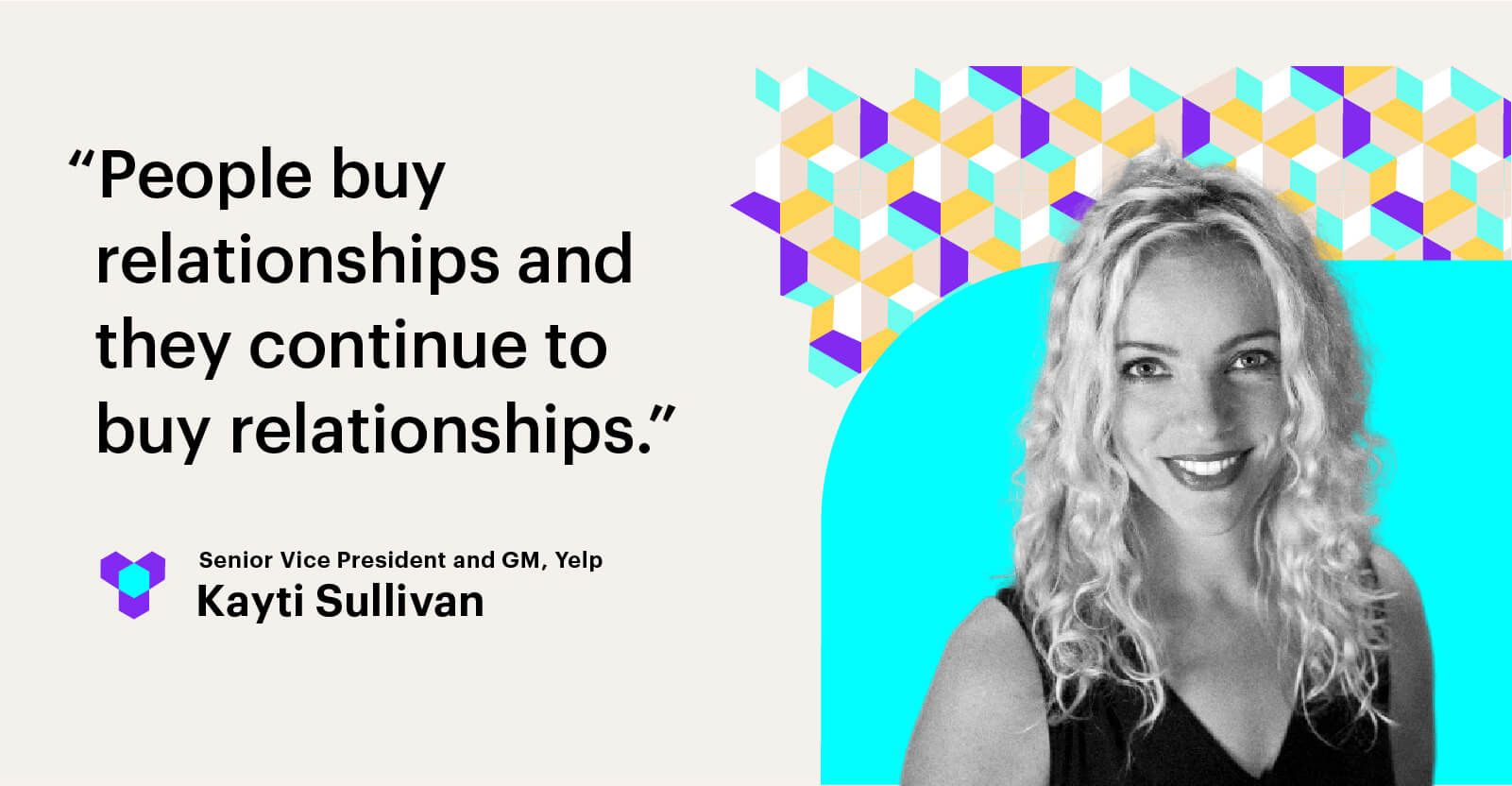
Keeping a deep connection to your customers is relatively easy when your user base is small and your team can interact with folks directly. But as growth balloons, competing priorities inevitably come up for your sales team. As Kayti puts it:
“Imagine if you were responsible for a book of business of 700 accounts, all small businesses who are advertising on Yelp. One of these customers calls in, saying, ‘I’m upset about a bad Yelp review I got and also I don’t understand how this part of my ads program is working.’ …You get another phone call and it’s a business that says, ‘Hey, I’d like to actually grow my business more and I’d like to spend more money.’…Where do you spend your time?”
Most sales reps will naturally prioritize the customer who wants to grow their business. But it’d be a mistake to focus all your attention on acquiring customers. In the age of SaaS when customers aren’t guaranteed to stick around month-to-month, you need to ensure strong customer retention to drive long-term growth.

This kind of competing priorities and incentives led to the formation of the Customer Success team at Yelp. As their customer base grew, Kayti saw just how impossible it was for a single team to manage customer relationships end to end. Phone calls weren’t being answered, response time was suffering. That poor customer experience was becoming a huge risk for churn and lost revenue:
“Our monthly managed revenue is basically just support and tickets, answering phone calls, getting back to customers when they have issues. Upsold revenue is its own team responsible for expansion revenue. And lost revenue needs to be its own team. With 120,000 customers and 10s of thousands of phone calls, we need to have a singular focus on how we actually manage revenue that’s being put out the door.”
Creating a distinct Customer Success team to manage the post-sale relationship enabled other teams to invest more in the parts of the customer relationship they manage, such as the initial sale and expansion conversations.
Of course, when you introduce a new team focused on a new set of metrics or priorities, it can be easy for the scale to tip in either direction. Retention begins to take precedence over acquisition, or vice versa.
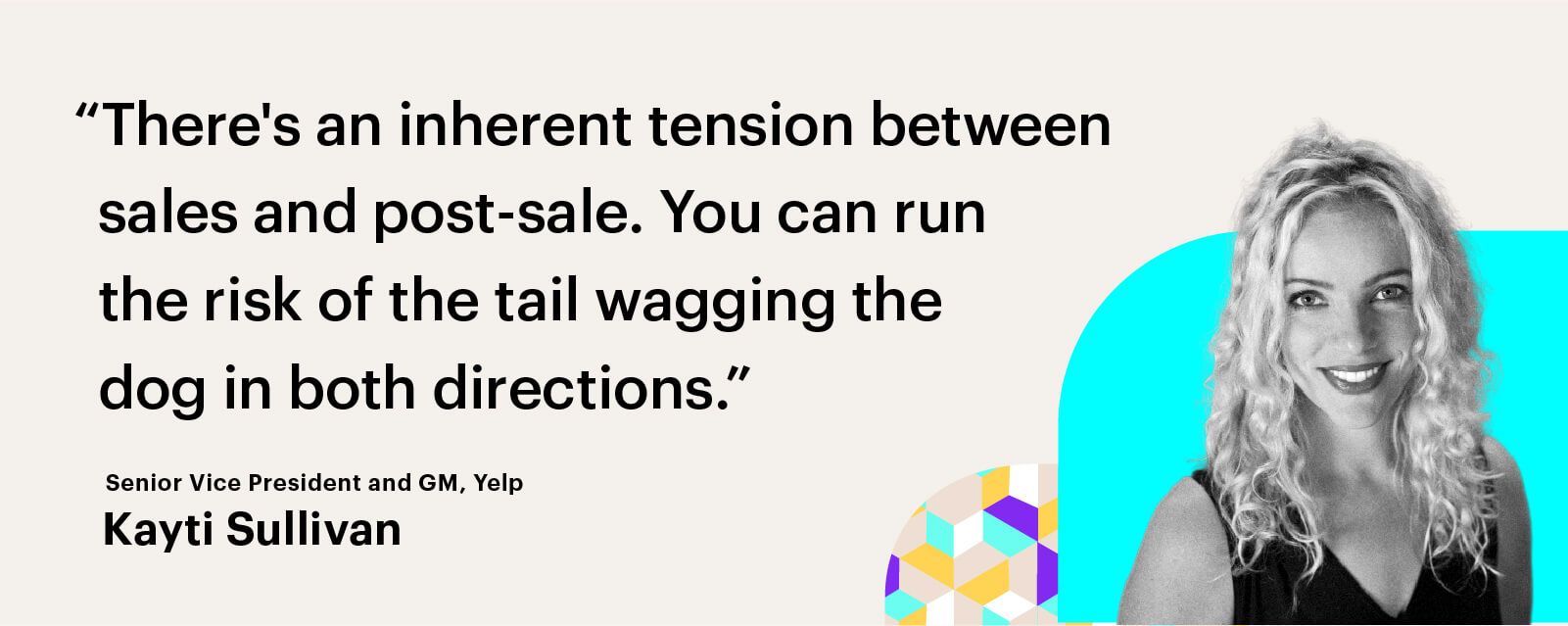
Kayti’s answer for that tension? It comes down to balance. She advises:
“Be thoughtful about what is it that you’re trying to accomplish, what’s the opposite of that and how…you synthesize these two things to find the middle ground that will help you unlock the growth that you want to unlock for your company or for your customer.”
How customer success drives growth
To achieve growth, venture capitalist Tomasz Tunguz recommends guiding customers along four stages: sales, deployment, adoption and expansion.
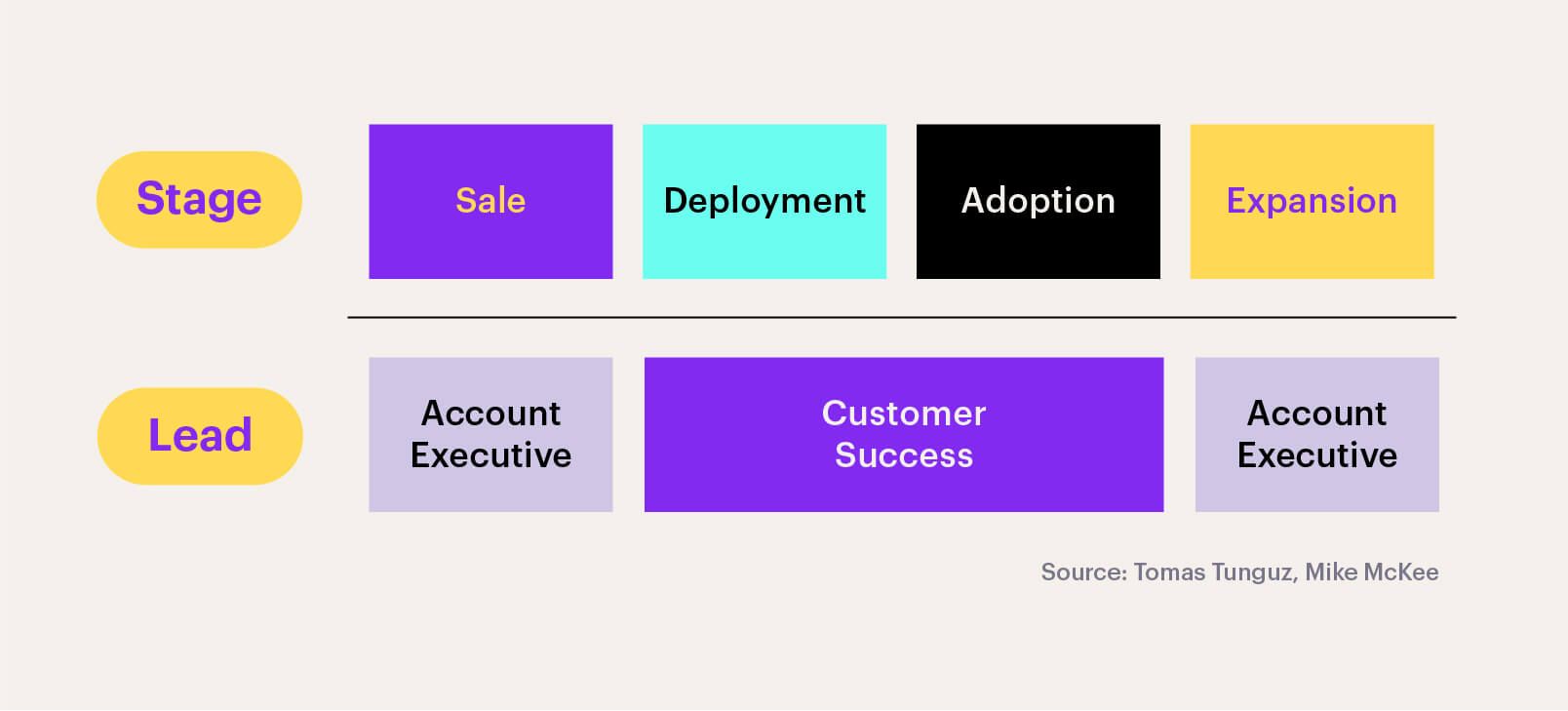
That last part is key because a well-executed customer success program can drive powerful expansion revenue. All the activities that the team takes on should be done with stronger, happier customer relationships as the ultimate goal.
“At Yelp, the customer success team drives education to our customer base, feedback from our customer base and product adoption. It doesn’t matter what form that comes in; if somebody’s calling in because they’re really upset, or they submit a ticket because they’re frustrated or are experiencing a bug…you do the same thing a sales team (or any customer facing employee) would do: listen, understand what’s happening with your customers, educate your customers, drive product adoption, and then share feedback. But what’s embedded in all of that is building a relationship with your customer.”
Kayti sums it up beautifully: “When you get into that beautiful flywheel of [feedback], the customer success organization can be a massive driver, not just a ticket taker and not just a call answerer and a firefighter.”
Gainsight research backs this up. Acquiring new customers can be an expensive game but an established customer success team ensuring healthy retention will yield meaningful profit year over year.
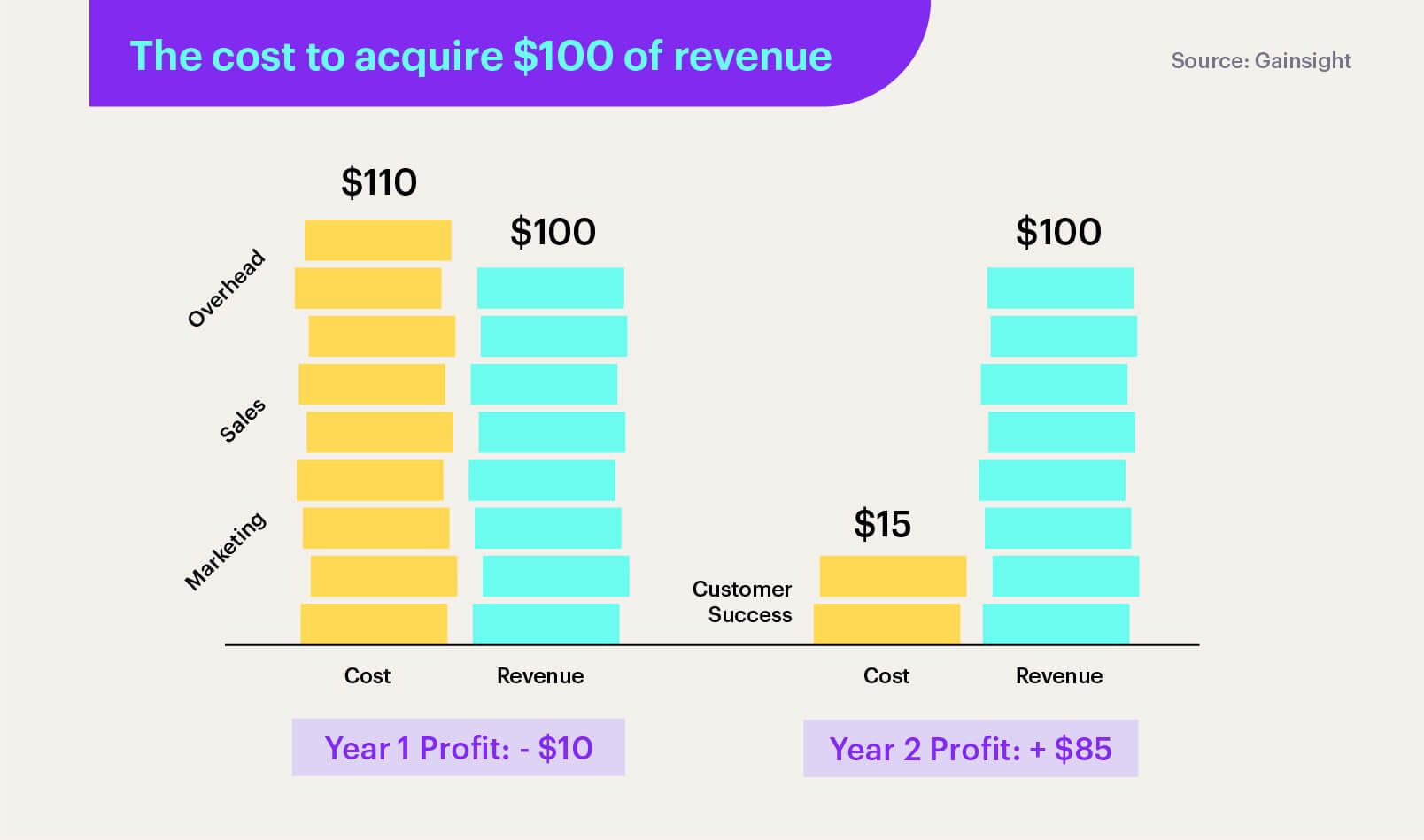
Developing a customer-centric team
Ultimately, customer success can’t be the focus of a single team. As many top business leaders have pointed out, every single team in your organization needs to adopt a customer-centric mindset.
For Yelp, that means creating advocates for both sides of their two-sided marketplace: the individual consumers as well as small business owners. Kayti and her team champion the customer through structured activities like beta feedback and user research. Informal advocacy is equally important. Ultimately, it comes down to knowing your customers well enough to be speak on their behalf and push for their goals.
Kayti points to eBay as another company that does a great job of celebrating their customers:
“eBay was always well respected for having what’s called eBay Live, which is an annual or bi-annual event where the top sellers would come into [the headquarters], and they would spotlight them. They were like movie stars internally. It’d be like: ‘Oh my gosh, Kaitlin P.! You’re the one who sells all the reusable cups and spoons. We love you. We love your work. We love the marketplace you’ve created.’”
So how do you help your team make customers their first priority? Survey Monkey’s CMO Leela Srinivasan has this advice for building a customer-centric culture:
- Build a customer advisory council within your company
- Listen beyond the vocal minority – you want to hear old customers, new customers, free customers, VIP customers and everyone in between
- Use storytelling to bring customer feedback to life
- Socialize feedback and build a culture where employees feel they can relate to customers in the same way they connect with their teammates
- Leverage customer word of mouth for customer acquisition
“When you get into that beautiful flywheel of [feedback], the customer success organization can be a massive driver, not just a ticket taker and not just a call answerer and a firefighter.”
Understanding the need for customer success is easy. But effectively committing to it? That’s a hard road to walk. Problem is, if you’re not listening to your customers, someone else definitely is. That someone? Your competitors.
This post is part of Scale, a place where we explore how businesses are driving growth through customer relationships. Scale offers advice and guidance from support, marketing, and sales leaders who are charting new paths for their customers – and their companies.









